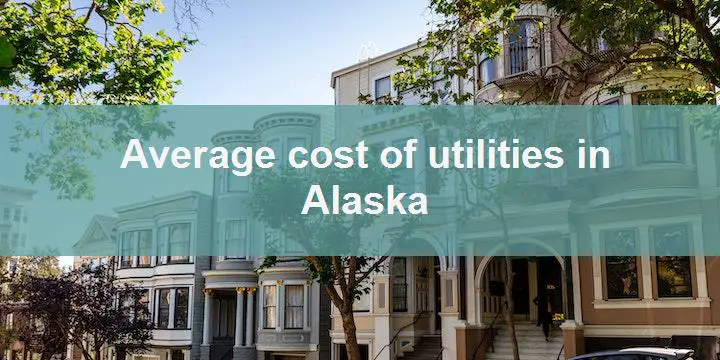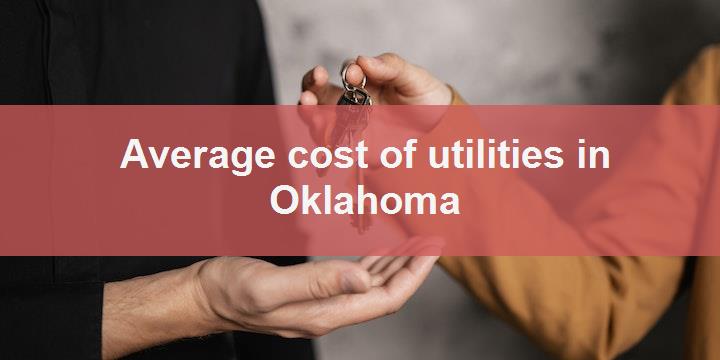When it comes to managing household expenses in Alaska, understanding utility costs is key. For a typical family of three living in a single-family home with standard appliances year-round, the average cost of utilities in Alaska is $667.71 in 2025. Alaska’s rugged landscape and extreme climate—marked by long, harsh winters and short, cool summers—pose unique challenges that can significantly impact utility bills.
Unlike many other states, heating costs in Alaska often dominate utility expenses due to subzero temperatures during the winter months. Additionally, the remote nature of many Alaskan communities can influence the cost of electricity, water, and fuel delivery, depending on how accessible the area is.
In this article, I’ll break down utility costs based on various living situations and seasonal variations. Whether you’re considering a move to Anchorage, Fairbanks, or a more remote village, you’ll gain a comprehensive understanding of what to expect when it comes to utilities in the Last Frontier.
Average Electric Bill in Alaska
When it comes to managing household expenses in Alaska, understanding your electricity costs is crucial. For a family of three living in a single-family home, the average electric bill in Alaska is $252.02 in 2025. Given Alaska’s harsh climate, with long, cold winters and brief, mild summers, electricity usage can vary significantly throughout the year.
Most Alaskan households rely heavily on electricity for heating during winter, which drives up costs. In contrast, summer consumption tends to be lower due to reduced heating needs. The average bill factors in both winter ($303.06) and summer usage ($200.97).
Alaska vs. Washington: Summer Energy Cost Comparison
To put Alaska’s electricity costs into perspective, the table below compares the summer energy expenses for a large single-family home with four people in Alaska and Washington. This comparison highlights how factors like climate and energy infrastructure influence electricity costs between these neighboring states.
| Criteria | Alaska | Washington |
|---|---|---|
| Total Consumption (kWh) | 862.12 kWh | |
| Electricity Rate (cents/kWh) | 24.90 ¢/kWh | 11.98 ¢/kWh |
| Estimated Monthly Cost | $214.67 | $103.28 |
| Detailed Cost Breakdown | ||
| Base Usage: 412.12 kWh | $102.62 | $49.37 |
| Refrigerator: 120 kWh | $29.88 | $14.38 |
| Air Conditioner: 240 kWh | $59.76 | $28.75 |
| Clothes Dryer: 90 kWh | $22.41 | $10.78 |
| Alaska estimated monthly cost is higher than Washington by 107.85%. | ||
Historical Trends in Electricity Prices
The chart above illustrates historical electricity price trends for large single-family homes in Alaska during the summer. This data helps identify patterns in price fluctuations, offering insights into how seasonal demand and energy policies have shaped costs over the years.
Electricity Cost Comparison Across Various States
Here is a detailed comparison of electricity costs across different states, considering various household types and seasons. This table offers a comprehensive view of utility expenses.
| State | People | Household Type | Season | Appliances | Electric Monthly Bill |
|---|---|---|---|---|---|
| New York | 3 | One-bedroom apartment | Summer | Fridge, AC, Dryer |
$148.77 |
| California | 4 | Single-family large | Winter | Heater, Dryer, Fridge |
$407.08 |
| Texas | 3 | Townhouse | Winter | Heater, Dryer, Fridge |
$168.56 |
| Florida | 3 | Single-family small | Summer | Fridge, AC, Washer |
$102.05 |
| Illinois | 3 | Two-bedroom apartment | Summer | Fridge, AC, Washer |
$98.75 |
| Ohio | 2 | Studio | Winter | Heater, Fridge |
$141.14 |
| Alaska | 2 | Townhouse | Summer | Fridge, AC, Washer |
$164.96 |
For a more detailed and personalized utility expense estimate, visit our Electricity Bill Calculator. Adjust the parameters to match your household specifics and get an accurate estimate tailored to your needs.
Average Gas Bill in Alaska
When managing household expenses in Alaska, it’s essential to factor in heating costs, especially during the harsh winters. For a family of three living in a single-family home, the average gas bill in Alaska is $134.71 in 2025. Alaska’s extreme climate, with long, frigid winters and mild summers, plays a significant role in driving up gas usage, particularly for heating and hot water.
Gas consumption varies greatly between seasons. During winter, households rely heavily on gas for heating ($197.32), while summer usage tends to be lower, focused on appliances like water heaters and stoves ($72.10).
Alaska vs. Washington: A Summer Gas Usage Comparison
To put Alaska’s gas costs into perspective, the table below compares the summer gas expenses for a large single-family home with four people in Alaska and Washington. This comparison highlights how regional climate and energy infrastructure affect gas consumption and costs.
Gas Bill Comparison Overview
| Criteria | Alaska | Washington | Avg. USA |
|---|---|---|---|
| Total Consumption (MCF) | 6.99 MCF | ||
| Gas Rate ($/MCF) | $12.32 | $18.01 | $17.73 |
| Estimated Monthly Cost | $86.14 | $125.92 | $123.97 |
| Appliance Cost Breakdown | |||
| Outdoor Grill | $6.80 | $9.94 | $9.79 |
| Water Heater | $49.87 | $72.90 | $71.77 |
| Gas Stove | $11.33 | $16.57 | $16.31 |
| Gas Oven | $18.14 | $26.51 | $26.10 |
| Alaska's estimated monthly cost is lower than Washington by 31.59%. | |||
| Alaska's estimated monthly cost is lower than the Avg. USA by 30.52%. | |||
The historical chart above illustrates gas price trends for large single-family homes in Alaska during the summer. This data offers valuable insights into how seasonal demand, energy supply, and market fluctuations have influenced gas prices over the years.
Gas Cost Comparison Across Various States
Here is a detailed comparison of gas costs across different states, considering various household types and seasons. This table offers a comprehensive view of utility expenses.
| State | People | Household Type | Season | Appliances | Gas Monthly Bill |
|---|---|---|---|---|---|
| New York | 3 | Townhouse | Summer | Water heater, Stove, Oven |
$88.71 |
| South Carolina | 2 | Studio | Summer | Water heater, Stove, Oven |
$61.56 |
| Vermont | 4 | Single-family small | Winter | Gas heating, Dryer, Oven |
$298.95 |
| Texas | 3 | Townhouse | Winter | Gas heating, Dryer, Oven |
$279.14 |
| Illinois | 3 | Single-family small | Summer | Water heater, Stove, Oven |
$79.83 |
| Georgia | 4 | Single-family large | Summer | Water heater, Stove, Oven |
$172.91 |
| Oklahoma | 2 | Studio | Winter | Gas heating, Dryer, Oven |
$170.61 |
To get a more detailed and customized utility expense estimate, explore our Gas Bill Calculator. Tailor the parameters to your household specifics and receive an accurate estimate suited to your needs.
Average Water and Sewer Bill in Alaska
When considering a move to or an investment in Alaska, understanding utility costs is crucial. In 2025, the average amount for water and sewer fees in Alaska is $68.00, a key factor that can significantly impact household budgets, especially given the state’s unique geographic and climatic conditions.
Comparative Analysis Across States
To provide a broader perspective, here’s how Alaska’s water and sewer fees compare with those in eight other states:
| State | Average Water and Sewer Fees |
|---|---|
| Washington | $75.00 |
| Oregon | $76.00 |
| California | $77.00 |
| Montana | $58.00 |
| Idaho | $48.00 |
| Nevada | $46.00 |
| Utah | $58.00 |
| Arizona | $64.00 |
Compared to states like California and Nevada, Alaska’s fees are influenced by its remote locations and the complexities of maintaining infrastructure in extreme climates.
Innovative Water Management in Alaska
Alaska’s environment demands unique approaches to water resource management:
- Snow and Ice Melt Systems: Leveraging seasonal snow and ice melt to supplement water supplies throughout the year.
- Permafrost Management: Implementing systems to prevent permafrost degradation, critical for maintaining stable water infrastructure.
- Natural Filtration Techniques: Utilizing the state’s vast wilderness areas for natural water filtration, reducing the need for extensive chemical treatment.
Local Programs and Initiatives
Alaska supports various programs to promote efficient and sustainable water use:
- Subsidy Programs: Residents can benefit from subsidies for installing water-efficient systems, helping reduce long-term costs.
- Educational Outreach: Community programs educate residents on sustainable water practices tailored to Alaska’s unique conditions.
- Research Grants: Funding opportunities for innovative projects focused on sustainable water management in extreme environments.
Environmental Stewardship
Alaska’s strong commitment to environmental conservation ensures that water management practices are both efficient and sustainable. This focus helps preserve the state’s pristine natural resources for future generations.
Conclusion
Drawing from my extensive experience in real estate, I can confidently state that Alaska’s unique water and sewer fee structure, combined with innovative resource management and robust local support, makes it an appealing choice for homeowners and investors alike. Our team is here to provide expert insights and resources to help you make informed decisions. Choosing Alaska means embracing a lifestyle that values both economic efficiency and environmental stewardship.
Garbage/Trash Removal Costs in Alaska
In Alaska, managing garbage and trash removal costs is a key part of household budgeting. The average cost for garbage and trash removal services in Alaska in 2025 is around $30.00. These costs can vary based on factors such as service frequency, bin size, and whether additional services like recycling are included.
Alaska’s unique geography presents distinct challenges in waste management. Remote locations, harsh weather conditions, and limited access to disposal facilities often result in higher operational costs, which can influence overall pricing.
Garbage/Trash Removal Costs Comparison Across States
To offer a clearer perspective, here’s how Alaska’s average garbage and trash removal costs compare with those in other states:
- Washington: $30.00
- Oregon: $30.00
- Idaho: $27.00
- Montana: $25.00
- Wyoming: $25.00
- North Dakota: $22.00
- South Dakota: $22.00
- Nebraska: $23.00
- Kansas: $22.00
- Oklahoma: $22.00
When compared to these states, Alaska’s garbage removal costs tend to be higher due to the logistical challenges involved in servicing remote communities and extreme weather conditions. However, these costs support reliable waste management solutions that are tailored to the state’s unique environment.
Factors Influencing Garbage Removal Costs in Alaska:
- Remote Accessibility: Transportation costs are higher in isolated regions, increasing the overall expense.
- Seasonal Challenges: Harsh winters can limit access, requiring specialized equipment and services.
- Recycling Programs: Areas with comprehensive recycling initiatives may have varying costs based on local programs.
Understanding these costs helps residents plan their household budgets effectively. If you’re looking for personalized advice on managing utility expenses in Alaska, our team is here to assist you with the latest insights and recommendations tailored to your needs.
Internet and Cable TV Expenses in Alaska
In Alaska, understanding the costs associated with internet and cable TV services is crucial for effective budgeting. The average internet and cable TV expenses in Alaska in 2025 are around $114.66. Living in the Last Frontier, I’ve seen firsthand how these costs can fluctuate based on the provider and your specific location.
Due to Alaska’s vast and remote regions, service providers face unique challenges in infrastructure and connectivity. However, there are still several reliable providers offering competitive packages to meet the diverse needs of residents.
Internet and Cable TV Provider Costs in Alaska
Here’s a detailed breakdown of pricing for different providers in Alaska:
| Provider | Internet Price | Cable TV Price | Bundle Price |
|---|---|---|---|
| Comcast | $60.99 | $71.99 | $115.99 |
| Verizon | $62.99 | $73.99 | $122.99 |
| AT&T | $56.99 | $67.99 | $104.99 |
These prices offer valuable insights into the available options, helping you select the plan that best fits your budget and service requirements.
Comparing Alaska’s Internet and Cable TV Costs with Other States
For a broader perspective, here’s how Alaska’s average internet and cable TV expenses compare with those of other states:
- Washington: $116.32
- Oregon: $116.32
- California: $116.32
- Idaho: $112.66
- Montana: $112.66
- Nevada: $116.32
- Utah: $113.66
- Hawaii: $116.32
As shown in this comparison, Alaska’s internet and cable TV costs tend to be higher due to geographical challenges like remote access and limited infrastructure. Despite this, the presence of multiple providers fosters healthy competition, offering residents various affordable packages.
Tips for Reducing Internet and Cable TV Costs in Alaska:
- Bundle Services: Consider bundling internet and cable to take advantage of discounted rates.
- Compare Providers: Regularly review plans from different providers to ensure you’re getting the best deal.
- Negotiate Rates: Contact your provider annually to negotiate better rates, especially if you’re a long-term customer.
- Optimize Usage: Evaluate your internet speed and cable channels—cut back on unused services to save money.
To ensure you’re getting the most value from your internet and cable TV services, we recommend comparing different providers and packages regularly. Staying informed can help you strike the perfect balance between cost and service quality. 🌐📺
Home Phone and Mobile Phone Costs in Alaska
In Alaska, understanding the costs associated with home phone and mobile phone services is crucial for effective budgeting. The average home phone and mobile phone costs in Alaska in 2025 are around 68.32. Given Alaska’s vast and remote landscape, these expenses can vary significantly depending on the provider and location.
Alaska presents unique challenges for service providers due to its rugged terrain and remote communities. Despite this, several reliable providers ensure that residents have access to essential communication services, both in urban centers and rural areas.
Home and Mobile Phone Pricing from Top Providers in Alaska
Here’s a detailed look at the pricing for different providers in Alaska:
| Provider | Mobile Phone Price | Home Phone Price |
|---|---|---|
| Verizon | $73.99 | $40.99 |
| AT&T | $67.99 | $32.99 |
| T-Mobile | $62.99 | Doesn’t provide |
These prices highlight the range of options available, helping you choose the plan that best fits your budget and communication needs.
How Do Alaska’s Phone Costs Compare Across States?
To give you a broader perspective, here’s how Alaska’s average home phone and mobile phone costs stack up against other states:
- Washington: 68.32
- Oregon: 68.32
- California: 66.66
- Idaho: 68.32
- Montana: 63.66
- Nevada: 64.66
- Utah: 65.66
- Hawaii: 63.66
As seen from this comparison, Alaska’s phone costs tend to be higher due to the state’s remote geography and the infrastructure challenges associated with delivering reliable communication services across vast distances.
Tips to Reduce Your Phone Bills in Alaska
- Bundle Your Services: Consider bundling mobile, home phone, and internet services for potential discounts.
- Compare Providers Regularly: Check for new deals annually, as providers often adjust pricing to stay competitive.
- Leverage Family Plans: If possible, join family plans to benefit from reduced rates for multiple lines.
- Optimize Your Plan: Review your usage and eliminate features you don’t need, such as extra data or international calling if not required.
To ensure you’re getting the best value from your home and mobile phone services, we recommend comparing providers regularly. Staying updated on the latest plans can help you find the right balance of cost and quality. 📞📱
Stay Informed with the Latest Updates
We update this article every month with the latest rates and provider information. Be sure to check back regularly to make informed decisions that can save you money. Our goal is to help you stay connected without stretching your budget. 🌟
FAQ
Q: 💡 What is the average monthly electric bill in Alaska in 2025?
A: The average monthly electric bill for Alaskans in 2025 is approximately $252.02.
Q: 🔥 What is the average monthly gas bill for Alaskans in 2025?
A: The average monthly gas bill for Alaskans in 2025 stands at approximately $134.71.
Q: 🚰 What is the average monthly water and sewer bill in Alaska in 2025?
A: The average monthly water and sewer bill in Alaska in 2025 is around $68.00.
Q: 🗑️ What is the average monthly garbage and trash removal cost in Alaska in 2025?
A: The average monthly garbage and trash removal cost in Alaska in 2025 is about $30.00.
Q: 📡 What is the average monthly internet and cable TV bill in Alaska in 2025?
A: The average monthly internet and cable TV bill in Alaska in 2025 is approximately $114.66.
Q: 📱 What is the average monthly home and mobile phone bill in Alaska in 2025?
A: The average monthly home and mobile phone bill in Alaska in 2025 is around 68.32.
Q: 🧾 What is the total average monthly cost of utilities in Alaska in 2025?
A: The total average monthly cost of utilities in Alaska in 2025 is approximately $667.71.



